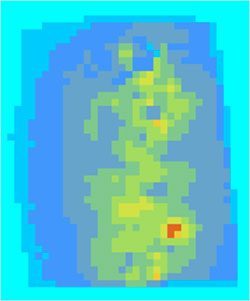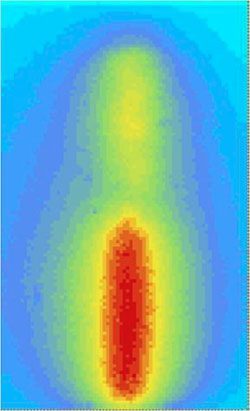CEA LASE runs Kartotrak and autoradiography to get maps of radionuclides difficult to measure
For their D&D projects, CEA LASE Laboratory has developed the Digital Autoradiography technique to get images of radionuclides that can be found in nuclear wastes but difficult to measure.... The technique has the advantage of allowing low energy radiation detection without destructive analysis. Kartotrak is used to process the large datasets which are derived from the technique and produce accurate 2D maps of radionuclides.
Problematics
The autoradiography technique consists in depositing sensitive screens collecting the radiation on facility floors, ceilings or walls during different exposure times.
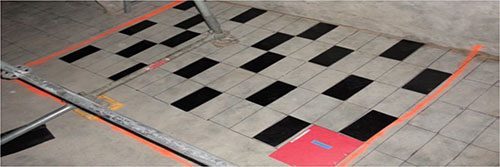
Screens are then scanned to produce 2D black and white tiff images with a resolution of a few microns. Color contrasts correspond to different values of radioactivity:
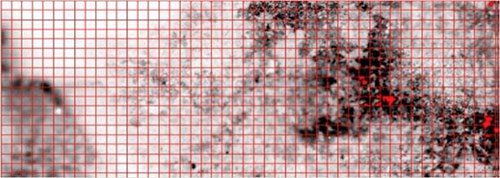
The tiff images are processed by in-house CEA software to deliver csv files. The new image resolution is 5 mm.
“Thousands of sensitive screens can thus be processed, which leads to hundreds of thousands of measures. We needed a software solution enabling easy integration and QC of all these data together with accurate mapping for precise radiation characterization”, explained Pascal Fichet, LASE research engineer.
Solution
Kartotrak was developed in partnership with CEA and this made it a natural choice for Pascal Fichet. Data is loaded in Kartotrak and analyzed to possibly identify acquisition errors. Then, the software computes the variograms which informs on how the data are correlated with distance, and delivers 2D kriged maps of radioactivity traces with a 5 mm resolution. Kriging variance maps are also computed giving information on kriged map reliability.
Results
Identification of radionuclides difficult to measure
Combining Digital Autoradiography and Kartotrak allowed identifying hot spots on the ground of a laboratory that hosted nuclear researches and that must be dismantled.
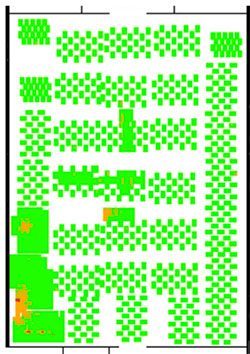
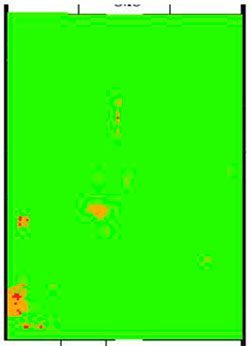
Data optimization
Kriging variance maps showed that only 20% of the measurements were enough to obtain good quality maps with minimized risk.
Sampling optimization for destructive analysis
The same technique is used to identify hot spots on sample surface, which helps in selecting the very small part of the sample which is significant and will be analyzed.
